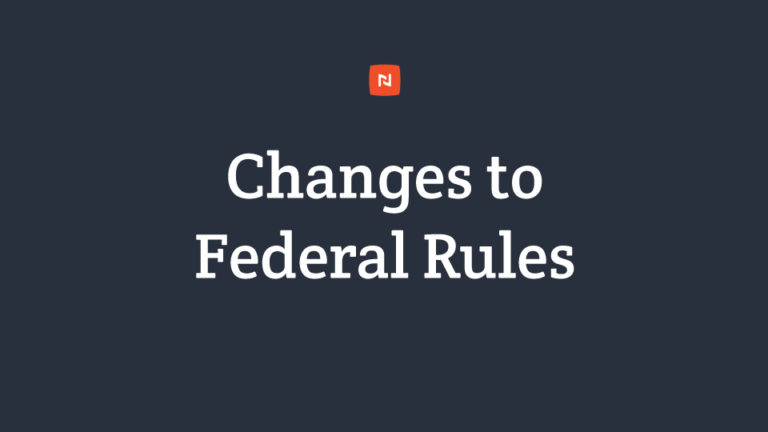On Dec. 1, U.S. federal courts adopted significant changes to the Federal Rules of Civil Procedure. Designed to control the runaway costs that have characterized litigation in the eDiscovery Age, the updated Rules feature new language that’s sure to create ripple effects throughout the district courts. However, the practical impact of these changes remains to be seen.
We asked five eDiscovery experts to share their opinion of the most important takeaways for litigators in the wake of the new Rules, and got a wide range of responses.
Q: What practical effects do you think the December 2015 updates to the U.S. Federal Rules of Civil Procedure will have on discovery?
Craig Ball
Principal Attorney/Computer Forensic Examiner
Craig D. Ball, P.C.
“I expect the amendments to FRCP Rule 26 to prompt ‘standard’ objections from producing parties asserting that a request for production of ESI is disproportionate, probably paired with purple prose pulled from the Rule so as to make the objection seem less like banned boilerplate.
“No one will be fooled. Savvy requesters will leverage these proportionality objections to mount discovery efforts respecting the proportionality factors, and wind up blowing all their discovery budgets on proportionality motions and hearings (our new Daubert). The upshot: More discovery about discovery. Discovery will cost requesters more and take longer to complete.”
Follow @craigball on Twitter
Peter Pepitone
Discovery Director
Dinsmore & Shohl LLP
“The changes to the Safe Harbor in Rule 37(e) and the movement of the proportionality analysis are getting most of the press, but I think other amendments may have more of an immediate impact.
“The deletion of the language “reasonably calculated to lead to the discovery of admissible evidence” is not technically a change in the law, and the Committee Note makes that clear, but it should have the effect of reining in the over-expansive scope of discovery and re-focusing it on the claims and defenses of the parties.
“My vote for the other most substantial change will be the new requirement that an objection to a Rule 34 request must state whether any responsive material is being withheld on the basis of that objection.”
Follow @PetePepiton on Twitter
Kelly Twigger
Principal Attorney
ESI Attorneys LLC
“There are two changes to the rules that will benefit lawyers and clients who can leverage them most effectively:
“1. The increased prominence of proportionality in Rule 26 and the multiple references back to it in the other Rules. Arguing for proportionality in discovery can have a significant effect on the cost of discovery when lawyers, clients and judges can fully understand what it means in this context.
“2. The rewritten Rule 37(e) that now requires the requesting party to prove an ‘intent to deprive’ to impose severe sanctions.There is a potential problem that the requirement for a requesting party to prove ‘intent to deprive’ is putting a burden on a party that could not possibly prove without access to the very information it seeks, so time will tell whether this change will meet the goal of achieving consistency in awarding sanctions for spoliation versus prejudicing the requesting party.”
Follow @kellytwigger on Twitter
David A. Greetham
Vice President of eDiscovery Operations
Ricoh Americas Corporation
“The new changes to the FRCP should have the effect of speeding up the initial litigation process, assist in controlling the cost of discovery and provide more defined rules to follow when spoliation allegations are made.
“The spoliation (Rule 37) amendments allow the court to go through a three-step process as a way to certify intent and allow for corrections prior to sanctions. How this moving target will work in practice remains to be seen, but it will be more important for attorneys to know and understand the data in order to best advise their clients.
“I think this will ultimately result in less sanctions being awarded, but with a higher dollar impact.”
Follow @DavidAGreetham on Twitter
Rakesh Madhava
Chief Executive Officer
Nextpoint
“Ultimately, I think these Rules should increase the ability of parties to litigate cost-effectively, leading to an increase in the overall volume of civil litigation.
“For organizations with large network infrastructures, the risk of facing sanctions as a result of an incomplete preservation or collection are greatly diminished. Companies that make a good faith effort now have specific rules to point to on proportionality and sanctions that limit their exposure. Case law already supported these concepts, but having specific rules provides tremendous additional certainty.
“This should also diminish the ability of those same companies to argue that discovery is unduly burdensome. For a matter of any size, there are rules in place that enable discovery to happen without being perfect.
“In litigation, tremendous costs have been expended on risk mitigation to avoid sanctions. Many of these efforts will no longer be absolutely necessary, so we should see some budget reallocation from technology and eDiscovery consultants back toward the attorneys. Legal tech providers will need to focus on other pain points in the process such as efficiency, security and operating costs.”
Follow @rakeshmad on Twitter
Extra Coverage: For a detailed breakdown of each individual Rule update and its potential implications, please watch the 30-minute webinar below led by Nextpoint attorney-in-residence Julianne Walsh.








